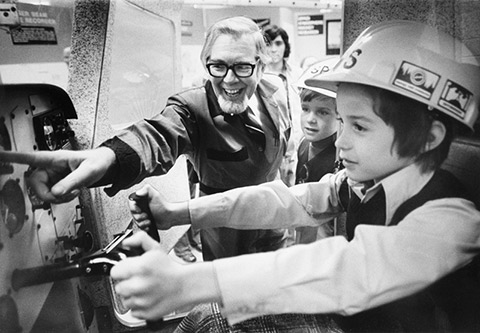The intensity of focus in the eyes and the firmness of the grip say it all: this is no simulated flight in this boy’s imagination. He’s at the controls, and he’s going places.
The Institute for Aerospace Studies’ Link flight simulator was a popular attraction at the Faculty of Applied Science and Engineering’s centennial open house in October 1973. The institute had recently acquired the trainer for the undergraduate aerospace lab to provide practical flight experience for students, says Professor Emeritus Lloyd Reid of the Institute for Aerospace Studies.
Invented by American entrepreneur Edwin Link and first sold in 1929, the basic simulators were used to train private and military pilots until the 1950s. “The cockpit cabin has room for one, with all the primary flight controls and instruments,” says Reid. The U of T model was used to train pilots for pleasure flying, with basic motion cues – such as tilting downward or rolling side to side – based on the operator’s flying skills.
Bernard Etkin, a professor with the Institute for Aerospace Studies and a renowned aerodynamics expert whose research helped develop numerous aircraft, demonstrated the Link Trainer at the open house.
The institute now houses a flight simulator that provides a full range of motion cues and can incorporate virtual reality in its simulations. It allows researchers to measure pilots’ performance while flying simulations of new aircraft designs.
But the Link Trainer still resides in the undergraduate lab – a piece of aviation history and a reminder of the enduring dream of taking flight.






